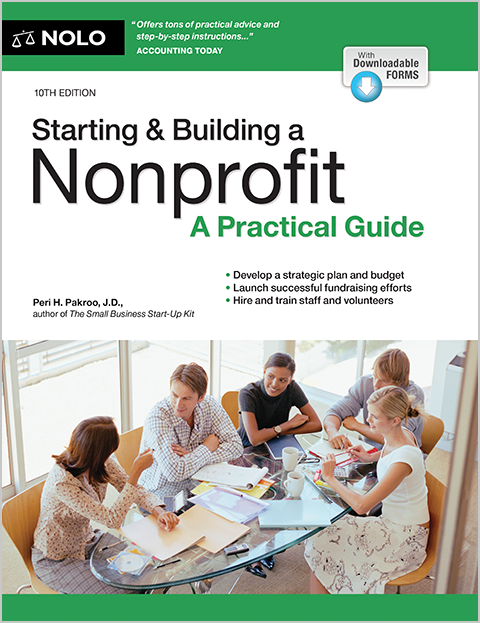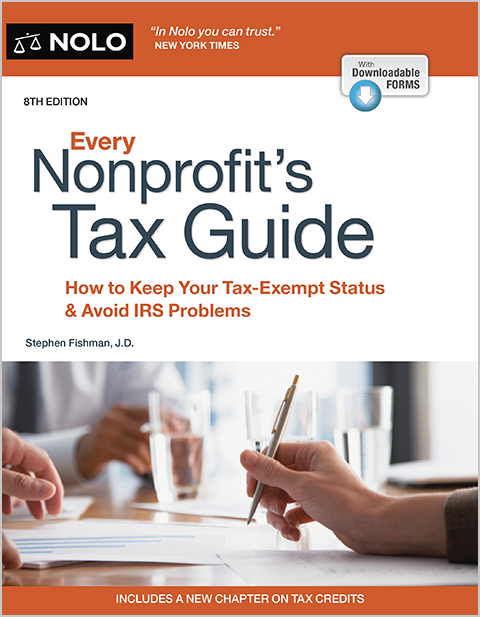Take steps to protect your nonprofit from legal problems.
If your nonprofit is structured as a corporation, then the people who work for it are protected from personal liability for work done on the nonprofit's behalf. But the nonprofit itself can still be held liable (over and above any amount that's covered by insurance). And, whether you ultimately win or lose a case that's brought against your nonprofit, a lot of time and energy will probably be eaten up in the process.
So let's look at some of the best ways to protect your organization from the most common types of lawsuits: contract disputes, employment law claims, and personal injury lawsuits.
Put Agreements in Writing -- But Read Before You Sign
Many of the everyday transactions your nonprofit engages in -- such as hiring a contractor to fix up your facility, buying equipment, and renting space for your office or for a special event -- require more than just an oral agreement. To prevent misunderstandings and disputes, your organization should establish exactly what's being agreed to, and put it in writing. That way, if a dispute arises -- or the other party doesn't do what was promised in the contract -- you'll have written evidence to present in court.
The agreement doesn't have to be written in tortuous legal language. What's important is that both sides understand it. If you're presented with a standard form agreement, don't feel you have to live with it as-is. You can always cross out sections or add to them by writing directly on the document (accompanying the changes with both sides' initials), or add an addendum (an additional page) to the contract.
Consider all the details carefully before signing. For example, if you were hiring a company to design a website for your organization, you'd want to make sure the contract included:
- a general description of the project
- a list of deliverables
- a project schedule with deadlines
- the fee (and circumstances under which additional fees can be charged)
- warranties of the company's work
- the company's promise to pay for any damages that it causes you (called "indemnification")
- the duration of the contract
- the circumstances under which it can be terminated, and
- how the parties will resolve any disputes that arise.
The best rule of thumb to follow may be this: Think about what could possibly go wrong, and make sure you address it in the contract.
Understand and Abide by Relevant Employment Laws
Employment-related claims -- such as sexual harassment, wrongful termination, discrimination, and wage-and-hour disputes -- make up a significant portion of lawsuits against nonprofits (and for-profit businesses, too).
Unfortunately, the very fact that nonprofits are financially strapped often leads them to impose on their employees in ways that are quite illegal. Failing to pay someone overtime or improperly handling their vacation time might be laughed off by a happy employee, but when that person becomes disgruntled or gets laid off, those kinds of employment practices can lead to a lawsuit.
Both federal and state laws govern employment matters, so you'll need to gain some understanding of both. Start out by visiting the HR and Employment Law section of Nolo's website.
Take Steps to Prevent Injuries
Personal injury or "tort" lawsuits are the least likely ones your nonprofit will face. But if one arises, it can be financially devastating. (There's a reason people keep advocating "tort reform.")
Tort claims can stem from a physical injury, property damage, emotional distress, or damage to a person's reputation. In general, whoever (or whatever organization) causes an injury will be financially liable for the damages suffered by the victim, even if the wrongdoer didn't mean any harm; both intentional injuries and those caused by carelessness can result in liability.
For example, if your group is located in an old building with too few electrical outlets and a visitor trips over one of many extension cords and breaks an ankle, that person might file a personal injury claim against your nonprofit, seeking compensation for medical bills plus pain and suffering.
Or, if your nonprofit posts false and damaging information about someone on its website -- say you write an article about the local art scene, accuse a gallery owner of fraudulent activity, and it turns out to be untrue -- the gallery owner could file a personal injury claim against your nonprofit based on damage to reputation.
Evaluate your most likely areas of risk -- for example, an office space that's open to the public, volunteers driving delivery vans of food to housebound people, regular camping or other trips with children, active advocacy work, or special events involving large amounts of money -- and then plan specific ways to minimize those risks and limit your exposure to legal trouble. Good management and supervision can go a long way.
For more information on personal injury law, see the Personal Injury and Accidents section of Nolo's website.
Just in Case: Buy insurance
All the precautions and planning in the world won't keep your nonprofit immune from a lawsuit, so insurance may be your nonprofit's best option. To learn more, see Nolo's article, What Types of Insurance Should a Nonprofit Buy?
A more extensive discussion of nonprofit risk management can be found in Starting & Building a Nonprofit; A Practical Guide, by Peri H. Pakroo, J.D. (Nolo).



